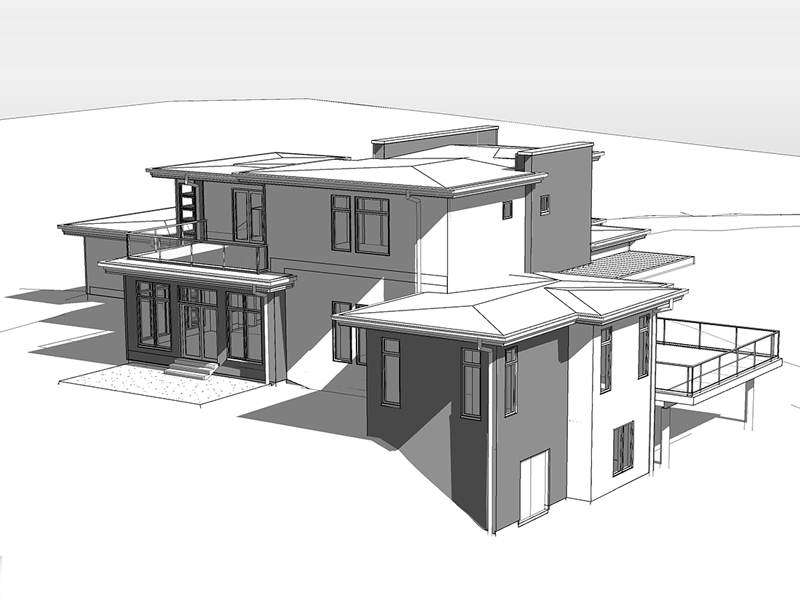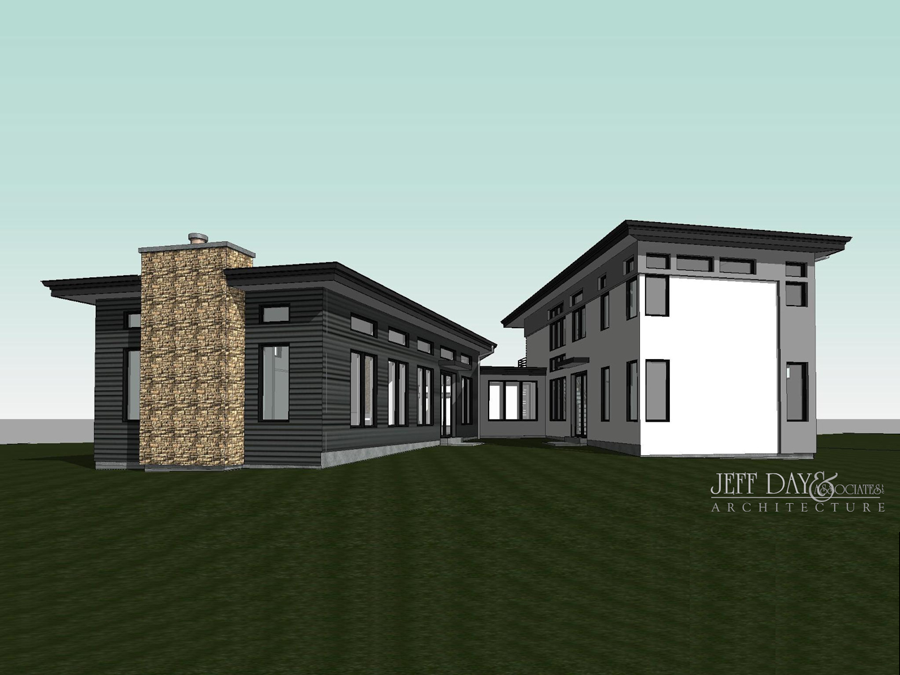Modern Houses
Modern architecture is characterized with clean lines and geometrical elements that embrace minimalism and abandon ornamentation. The architects at Jeff Day and Associates will help you to make a statement with your new custom modern home or renovation. Read on the see what features to incorporate to your contemporary house plans.
Read More
Modern Architectural Homes

Modern Architecture turned away from the highly decorative revival styles and focused on utility and embraced a concept of truth to materials. A defining characteristic of modern architecture is the principle that form follows function, meaning the design of the home should focus first on how the space will be used instead of eye-catching details. Truth to materials is an idea that the most practical material should be used for a project and should be exposed instead of covered with paint or a facade. This concept led modern architects of the early 1900’s to use industrial materials like glass, steel, iron and concrete in their designs. Contemporary homes take a similar minimalist approach but incorporate more artistic expression to add more character than the original modern homes.
Modern architecture encompasses several styles like International Style and Mid-Century Modern homes. While not typically included in the Modern movement, the Prairie School style with its clean lines and minimalist approach could arguably also be considered a part of Modern architecture. Despite the varied styles, there are key elements that are shared across the many forms.
Features of Modern Houses
- Clean, simple lines – avoiding ornamentation, modern architecture focuses on sleek edges and smooth textures
- Walls of glass or ribbon windows – banks or walls of windows let in large amounts of natural light
- Well-defined, open floor plans – modern homes generally have large, open floor plans that have dining and living spaces flowing into one another
- Natural and industrial building materials – common materials are stone, brick, iron, steel and glass
- Asymmetrical designs – because of the minimalist approach, geometrical designs are used to create a striking and aesthetic composition
- Flat roof – keeping clean lines, modern style houses typically have flat roofs
- Cantilevered balconies and roof overhangs – emphasizing horizontal lines, modern designs have low, horizontal structures like cantilevered overhangs and broad roof eaves
Modern vs. Contemporary
Modern architecture technically refers to the movement that started after World War II and lasted until about 1960. Originally this movement rejected all influence of tradition or history that was emphasized in the revival movements of the time. Other architectural styles, such as the Mediterranean or Victorian styles, put more emphasis on the ornamentation and detail of the home. The stark designs of the modern tradition were rejected in the postmodern movement as too stark and impersonal. This evolved into the contemporary designs we see today that have the minimalistic aesthetic but incorporate color and ornamentation. Whereas there is a technical difference between the two terms, today they are generally used interchangeably.
Iconic Modern Architecture
- The Fallingwater House (Frank Lloyd Wright, Mill Run, Pennsylvania, USA, 1935)
- Villa Savoye (Le Corbusier, Paris, France, 1931)
- Barcelona Pavilion (Ludwig Mies Van der Rohe, Barcelona, Spain, 1929)
- The Guggenheim Museum (Frank Lloyd Wright, New York, USA, 1959)
- Glass House (Philip Johnson, New Canaan, Connecticut, USA, 1949)





